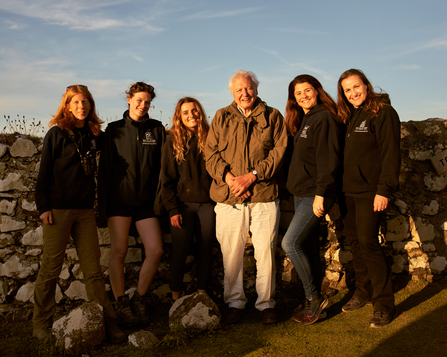On the 20th of June, under blue skies and a very friendly herring gull, myself and 4 colleagues from The Wildlife Trust of South and West Wales (WTSWW) travelled to Skomer Island for one of the most inspiring days of our careers – we would be working with Sir David Attenborough.
When we met the Silverback crew, they had a distinct air of being ‘the best of the best’, evidenced only by humble references to previous shoots with ‘David’, and brief mentions of last week’s expedition shoot in South America, where the sound recordist had just returned from. It was incredible to be surrounded by such unpretentious talent.
The team were no strangers to hard work, and tirelessly carried countless bags of kit up the 87 steps from the boat landing to the main island. Once at the top, the agenda was decided and we headed in the direction of The Wick, Skomer’s most famous puffin-spotting area.
But there were no puffins.
Several days of high winds had forced the ‘clowns of the sea’ to stay on the land, and a calm, sunny day offered the perfect opportunity for them to take to the sea once again. Not quite the ‘puffin island’ we’d been hoping for.
Later into the afternoon Sir David Attenborough arrived, telling us how he’d prepared for the trials of Skomer’s undulating landscape by walking up and down the garden steps of his home in London.
Filming begun in the afternoon, just as the sun passed over the centre of the island and begun to paint The Wick in an array of golden tones.
When evening was drawing in, the puffins began returning to the island. The coastal slopes of Skomer are honeycombed with the burrows of over 40,000 puffins which return each year to raise a single chick.
In the last of the daylight, surrounded by countless puffins, Attenborough professionally completed the final take of what would be the end sequence of the first episode of Wild Isles, airing in the following Spring.

